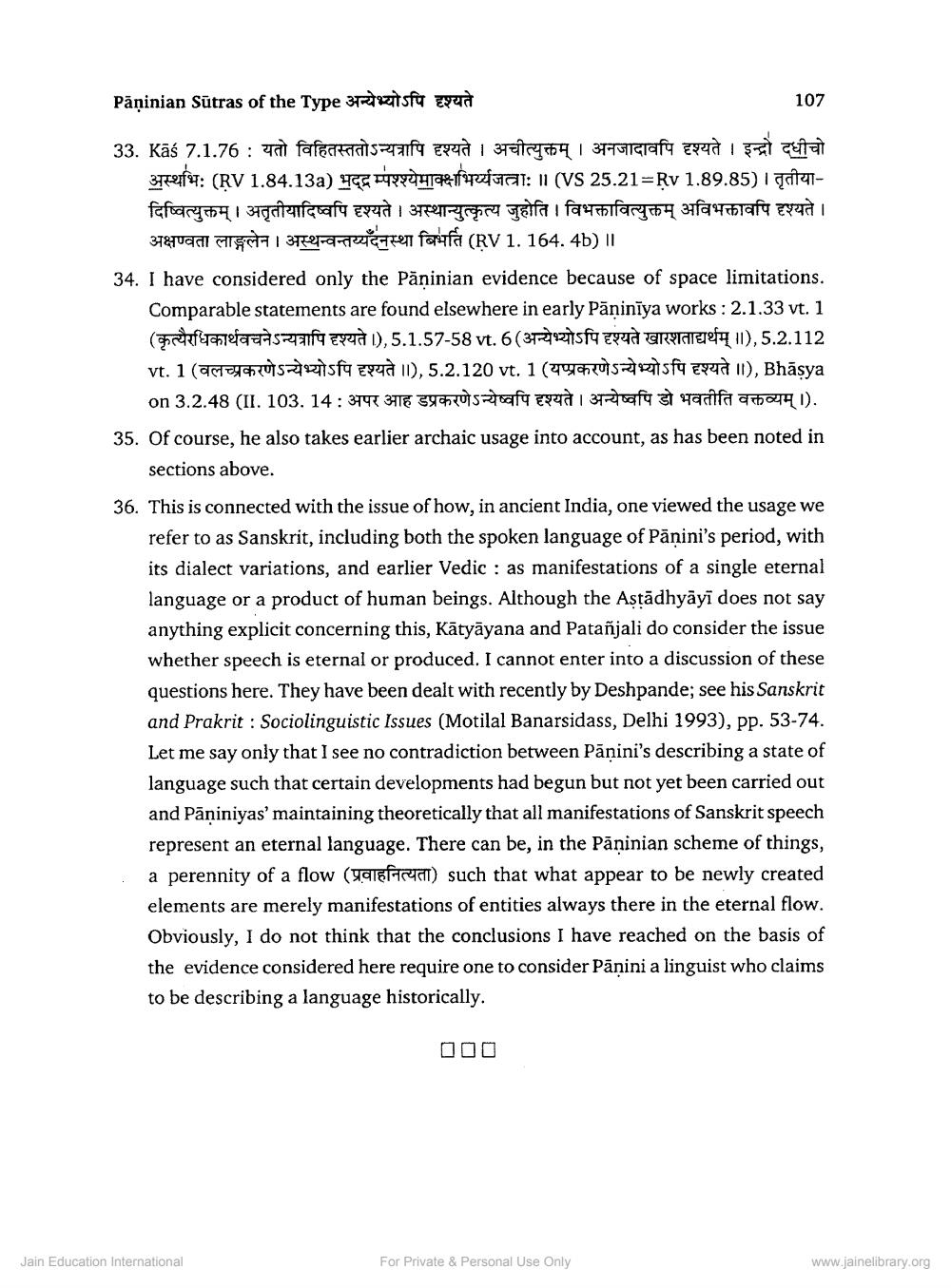________________
Pāņinian Sütras of the Type 3
zitsfu Eyed
107
33. Kāś 7.1.76 : a fafectats analfa erudi testry #641 39761grafa gredi ei uitat Strefa: (RV 1.84.13a) YGS -
yhteellisal: 11 (VS 25.21=Ķv 1.89.85) i iditeदिष्वित्युक्तम् । अतृतीयादिष्वपि दृश्यते । अस्थान्युत्कृत्य जुहोति । विभक्तावित्युक्तम् अविभक्तावपि दृश्यते ।
378 van esta i spreyta frechen faufa (RV 1. 164. 4b) || 34. I have considered only the Pāninian evidence because of space limitations.
Comparable statements are found elsewhere in early Pāninīya works: 2.1.33 vt. 1 (perfecteatasoa Erea I), 5.1.57-58 vt. 6 (3772221ste Egud ERYTGIETY 11), 5.2.112 vt. 1 (aden 05 sf Erud II), 5.2.120 vt. 1 (20US Sfa Esad II), Bhāsya
on 3.2.48 (II. 103. 14 : 374 376 347505 afgerandi 37 af starfa 141). 35. Of course, he also takes earlier archaic usage into account, as has been noted in
sections above. 36. This is connected with the issue of how, in ancient India, one viewed the usage we
refer to as Sanskrit, including both the spoken language of Pānini's period, with its dialect variations, and earlier Vedic : as manifestations of a single eternal language or a product of human beings. Although the Astādhyāyī does not say anything explicit concerning this, Kātyāyana and Patañjali do consider the issue whether speech is eternal or produced. I cannot enter into a discussion of these questions here. They have been dealt with recently by Deshpande; see his Sanskrit and Prakrit : Sociolinguistic Issues (Motilal Banarsidass, Delhi 1993), pp. 53-74. Let me say only that I see no contradiction between Pāṇini's describing a state of language such that certain developments had begun but not yet been carried out and Pāṇiniyas' maintaining theoretically that all manifestations of Sanskrit speech represent an eternal language. There can be, in the Pāṇinian scheme of things, a perennity of a flow (E N) such that what appear to be newly created elements are merely manifestations of entities always there in the eternal flow. Obviously, I do not think that the conclusions I have reached on the basis of the evidence considered here require one to consider Pāṇini a linguist who claims to be describing a language historically.
000
Jain Education International
For Private & Personal Use Only
www.jainelibrary.org




